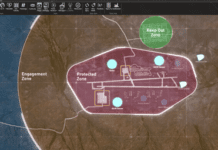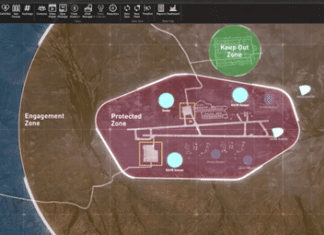This post is also available in:
 עברית (Hebrew)
עברית (Hebrew)
Law enforcement agencies will soon be able to adopt facial recognition algorithms and use them in public spaces with less hassle and fewer distractions. That means the technology is likely to be used more widely. New facial recognition-enabled smart glasses could make the technology truly ubiquitous, able to be deployed by law enforcement and private security any time and any place.
The glasses themselves are made by American company Vuzix, while Dubai-based firm NNTC is providing the facial recognition algorithms and packaging the final product.
The technology dubbed iFalcon Face Control Mobile is based on AR glasses with an 8-megapixel camera embedded in the frame which allows the wearer to scan faces in a crowd and compare with a database of 1 million images. Notifications about positive matches are sent to the glasses’ see-through display, embedded in the lens.
NNTC claims its technology can detect up to 15 faces per frame per second, and capable of identifying an individual in less than a second.
NNTC says it’s so far produced 50 pairs of facial recognition-enabled glasses, and that they are “currently being deployed into several security operations” in Abu Dhabi, the capital of the United Arab Emirates.
The verge.com claims that this isn’t the first time that facial recognition is embedded in glasses. Police forces in China deployed similar tech last year, using the hardware at train stations to pick out suspects in a crowd. The technology was also used to keep blacklisted individuals like journalists, political dissidents, and human rights activists away from the annual gathering of China’s National People’s Congress, a pseudo-parliament with 3,000 delegates.
Users can carry or wear a portable base station which connects to the glasses and stores a database of targets. This means they don’t need an internet connection for the software to function, giving them more mobility, while the notifications sent to the glasses’ built-in display frees up the wearer to interact with people or perform other duties.


























